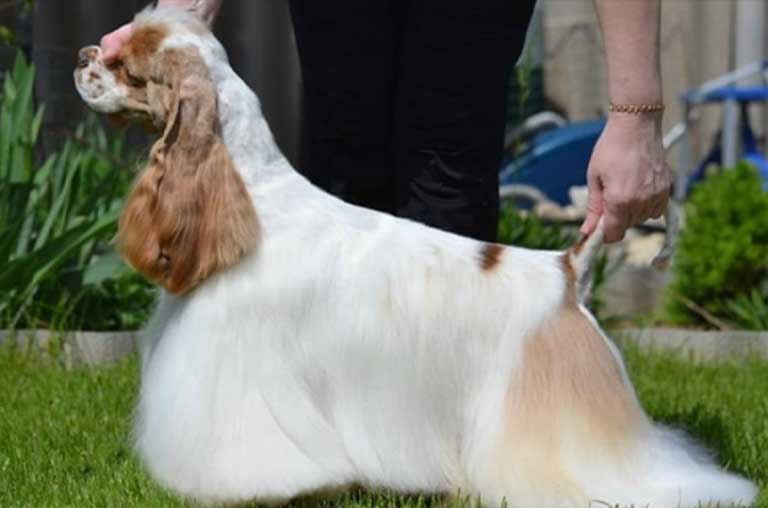Need some information about Panosteitis in a Cocker Spaniel and growth-based health concerns? If so, today is your lucky day. In this post, we got all the related details about the Panosteitis disorder topic. So, you can watch your cocker spaniel puppy grow without any concerns.
Growing a puppy can be a challenging task. Especially if the puppy is a Cocker Spaniel, the task is much more challenging. That is why today we are going to talk about Panosteitis and growth-based health concerns for cocker spaniel puppies.
Having said that, knowing the risks earlier can be quite beneficial. Whether it is a Panosteitis or other growth issue, you will be able to prepare for the challenge. So, let us get started.
What is Panosteitis?
Panosteitis is known as a painful developmental disorder. This disorder occurs in rapidly growing young large breed puppies. So, Cocker Spaniel puppies are a perfect target for these kinds of disorders. They checked all the boxes of Panosteitis disorder.
Affected cocker spaniel puppies might experience waning and waxing musculoskeletal pain. The reason for this Panosteitis phenomenon is unknown. However, the researchers point toward excessive dietary protein consumption. When it comes to Panosteitis, some dog breeds are commonly affected.
What are the Symptoms of the Panosteitis in a Cocker Spaniel?

Whatever the disorder or the illness, first, you must understand it properly. To do that, look for Panosteitis symptoms.
- Lameness changes between limbs
- Severe pain. The pain will grow after the affected limb gets palpated
- Lazy to rise or stand up
- Excessive vocalization
- Loss of appetite
- Fever
If your Cocker Spaniel puppy shows the above symptoms, he might be suffering from Panosteitis disorder. So, give him the necessary treatment accordingly. We will talk about the treatment process in the next section.
What Kind of Treatment Should I Give to Cure Panosteitis in a Cocker Spaniel?
Unfortunately, there are no cures for Panosteitis in a Cocker Spaniel. However, the treatment process is focused on relieving pain while the disease is active.
When you contact a veterinarian, he will ask you to give NSAID to your Cocker Spaniel. These drugs decrease inflammation and pain remarkably. Some cocker spaniel dogs react well to NSAIDs, and some do not. Therefore, this process is a trial-and-error method.

Note: If the Cocker Spaniel puppy is on medication, prevent him from strenuous activities.
Another thing you could do is transition your Cocker Spaniel to a new diet. But contact the veterinarian before changing the diet. Depending on the age of your cocker spaniel puppy, the veterinarian will give you a plan on how much Cocker Spaniel should eat. Also, if your cocker spaniel puppy is overweight, he might need a good weight loss diet plan. Always remember with too much weight, the puppy’s limbs will endure a lot of stress and pain. So, losing some weight will benefit the cocker spaniel puppy.
We understand that as a dog owner, it is extremely hard to see your puppy in pain. However, sometimes you will not have to suffer much longer. Because most Panosteitis cases resolve with time. But this is not true for all Cocker Spaniel puppies. So, remember to seek out treatment whenever you need it.
How to Prevent Panosteitis and Other Growth-Based Concerns for Cocker Spaniel Puppies?
We hope now you have a good idea about Panosteitis and growth-based health concerns for cocker spaniel puppies. Besides, now you know the treatment process too.
However, rather than looking for treatment, it is always a clever idea to prevent any health concerns even before they are started. Therefore, here are some tips to prevent Panosteitis in a cocker spaniel puppy.
Proper Diet
As mentioned above, a proper diet can go a long way in determining the health of your cocker spaniel puppy. So, provide a balanced and complete puppy diet for your cocker spaniel.
On the other hand, only provide food that is healthy for the cocker spaniel breed. Also, include foods that contain phosphorous and calcium for the dog’s diet.
Daily Exercise
Regular exercise for Cocker Spaniel can be great for the puppy with Panosteitis disorder. It will ensure development and healthy growth. Besides, cocker spaniels are a highly energetic dog breed. Therefore, regular exercise is necessary. So, take the puppy for a walk and let him run around your home.
However, make sure to avoid high-impact activities instead do regular fun activities with your Cocker Spaniel. It can put too much stress on their growing bones and joints.
For instance, a six-month-old puppy should play with other six-month-old puppies. Do not let him run with you. As mentioned earlier, it will be too much for him.

Wrap Up
If you follow the post properly, you should not have any doubts about Panosteitis disorder and growth-based health concerns for cocker spaniel puppies. As discussed, Panosteitis in a Cocker Spaniel can be dangerous for your Cocker Spaniel puppy.
However, with proper treatments, you can prevent this disorder. So, make sure to do that for your cocker spaniel puppy.

Leave A Comment